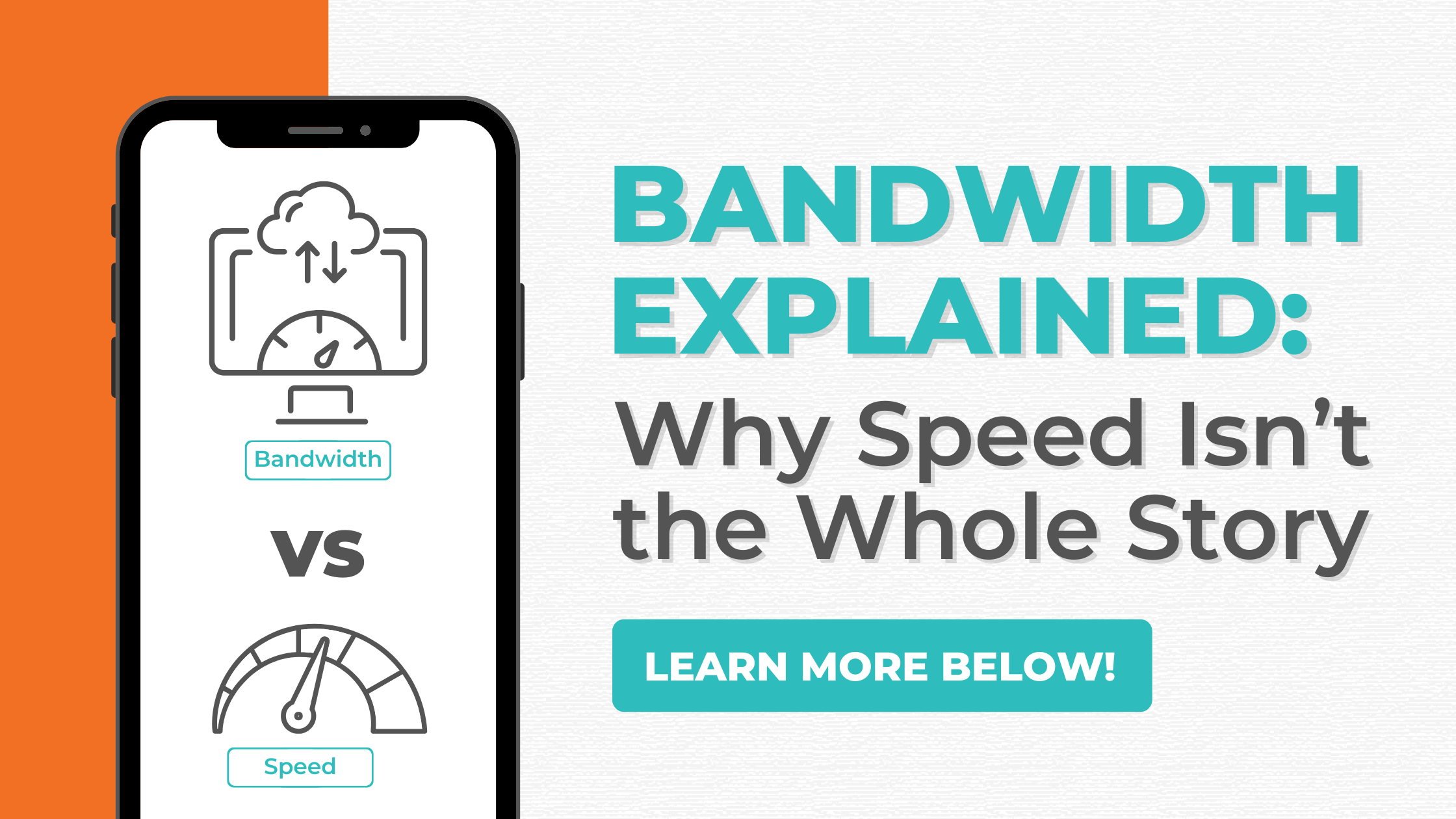Bandwidth Explained: Why Speed Isn’t the Whole Story
When it comes to internet service, there are a lot of technical buzzwords that get thrown around, but “speed” and “bandwidth” are two terms that get tossed around the most and are frequently misunderstood. Often you’ll hear them used interchangeably, but here’s the truth: they’re not the same thing. We believe that giving our customers all the facts and understanding the difference between “bandwidth” and “speed” can help you make better decisions about your internet service and help you get the most out of your connection. So let’s break down the difference between the two.
So What Is Bandwidth?
An easy way to visualize it is to think of bandwidth like a highway. It’s the maximum amount of data that can travel from the internet to your devices at once. The wider the highway, the higher the bandwidth, and the more cars or data that can travel side by side without a traffic jam.
For example, if you have a 1 Gbps connection, that’s your bandwidth or the width of your highway— it means you can move up to 1 gigabit of data per second. A big thing that influences your bandwidth is the number of devices you have utilizing your network. If you have your phone, laptop, and TV using your network simultaneously, they are like their own little car on the bandwidth highway, taking up portions of bandwidth. So the more bandwidth you have, the more devices you can support at the same time without slowing things down and risking a traffic jam.
What Is Speed?
Now, when it comes to speed, that is how fast the cars are able to move on that highway, kind of like the speed limit. It’s the max speed at which data can travel on the bandwidth highway to get from Point A to Point B. Your speed can be affected by a host of things, like your connection type, your device’s capabilities, your Wi-Fi router, and even the websites you’re accessing.
Your speed determines how quickly a website loads, how fast a video buffers, or how soon your file finishes downloading. For example, if you are on a 1 Gbps connection, and there is no congestion on the bandwidth highway, you will be able to download or upload a 1 GB document in approximately 8 seconds.
Speed vs Bandwidth
It’s easy to see why there would be confusion between the two terms since what they do affects the other. The more bandwidth you have, the less congestion you’ll have on your network, letting the data you’re using travel the full speed limit without interruption. And the faster your speeds, the quicker the data can get from Point A to Point B, helping prevent stagnation and network congestion.
Knowing the difference between the two can help you in deciding what kind of connection will work best for your lifestyle. If you are a single person with only a couple of devices, you might not notice much of a difference between a 250 Mbps and 1 Gbps connection outside of the general speed because you’ll have plenty of bandwidth for your devices. But if you have a family with multiple users and devices on your network constantly, you will notice a huge difference. Your 250 Mbps connection won’t have the bandwidth (highway lanes) needed to keep up with the devices using data on your network in the way that a 1 Gbps or 2.5 Gbps connection could.
How Fiber Makes a Difference
Unlike many traditional internet providers, having a fiber connection (like UTOPIA Fiber) changes the game by offering symmetrical speeds! Symmetrical speeds mean you get the same bandwidth and speeds for both uploads and downloads. To go along with the highway analogy, having symmetrical speeds means that both sides of the road have the same number of lanes and the same speed limit (250 Mbps download and 250 Mbps upload). Unlike other connections, where you may have 250 Mbps download but only 50 Mbps upload. This would be like the download side of the highway having 4 lanes of traffic, but the upload side only having 1. That’s what makes having symmetrical speed on a fiber connection such a game-changer! Especially for those who work from home, game, stream, or share large files regularly!
What does this mean for you?
Knowing the difference between Bandwidth and Speed can help you make a better, more informed decision on the connection that works best for you! If you have more devices then you’ll need a connection with more bandwidth, so it would be better to go with a 1 Gbps connection over a 250 Mbps connection or if you work from home and Zoom frequently having a fiber connection with symmetrical speeds might be the best option for you!
To sum up, everything we’ve covered, Bandwidth is how much data you can move at once, and Speed is how fast that data travels.
If you’re interested in fiber and want to see what our network can do for you, check our Services page to learn more about what we offer and get ready to experience an internet connection that is fast, reliable, and future-ready!
